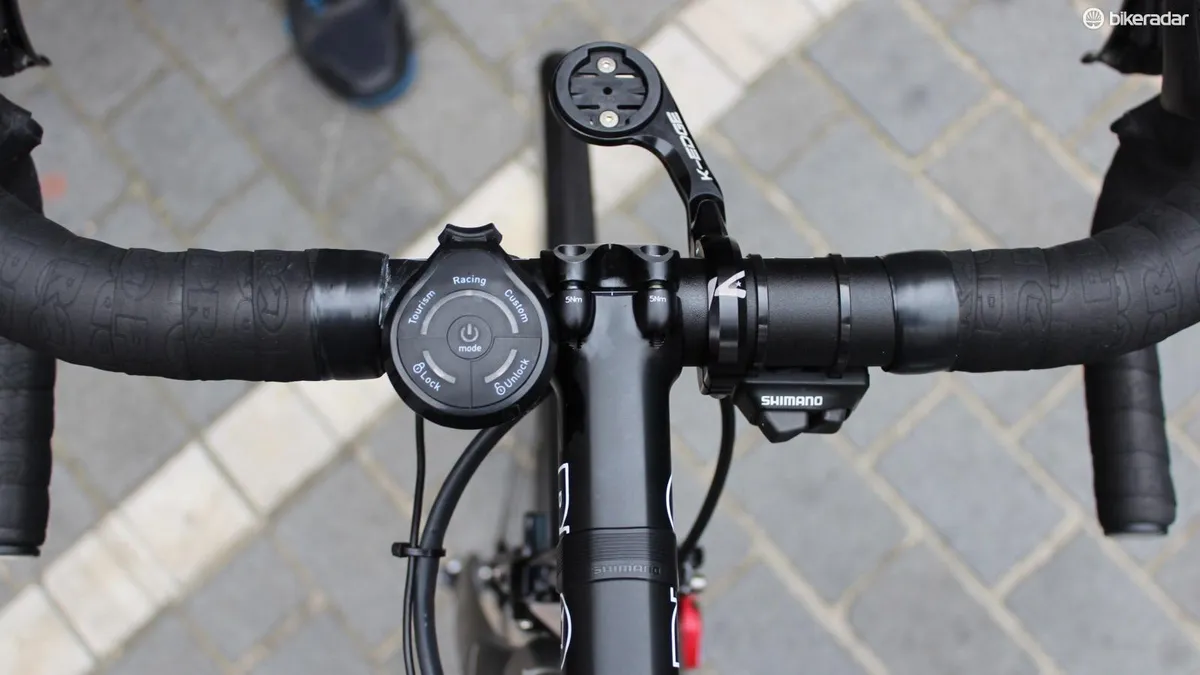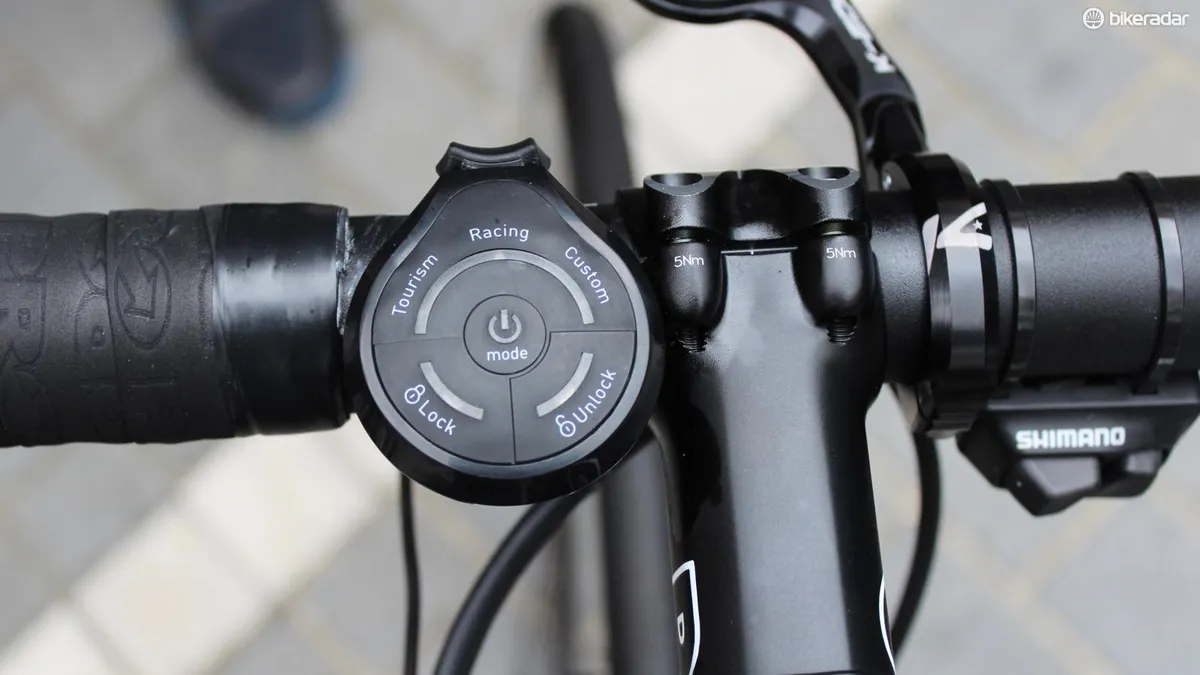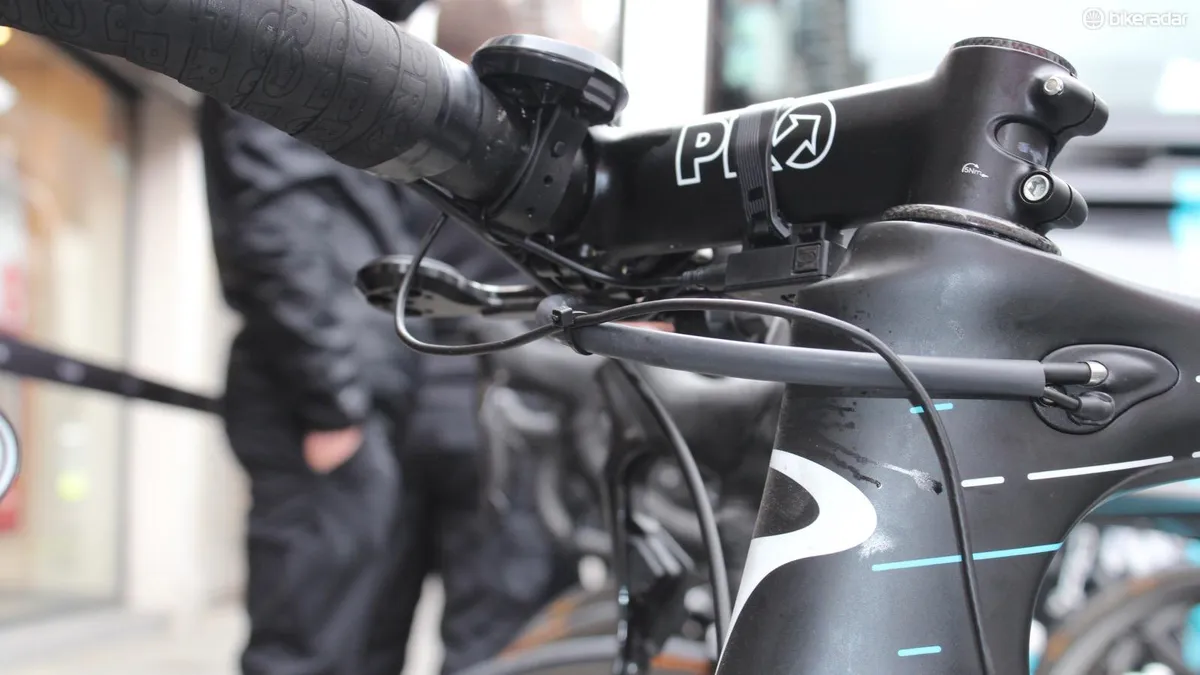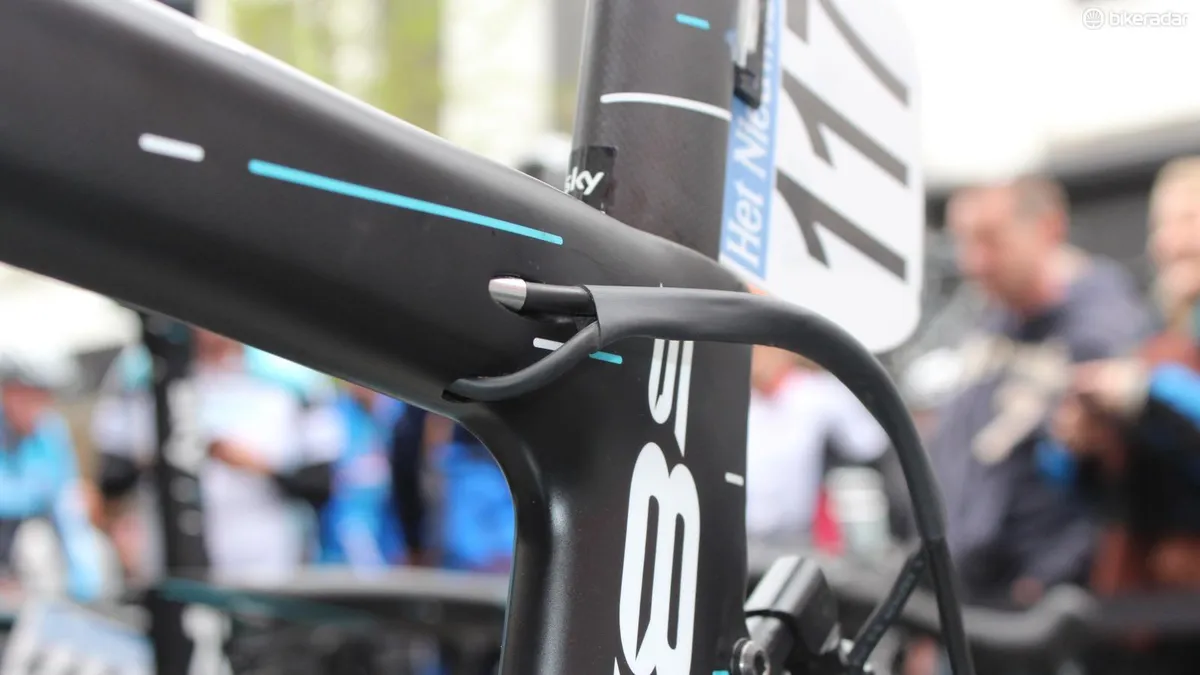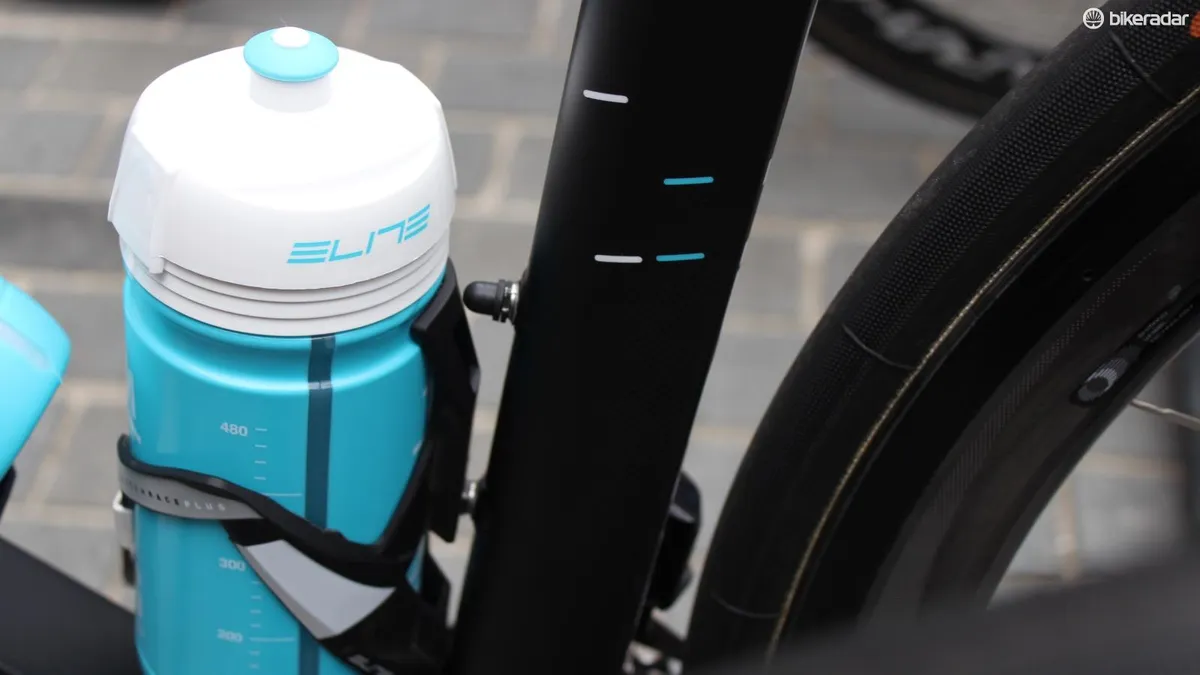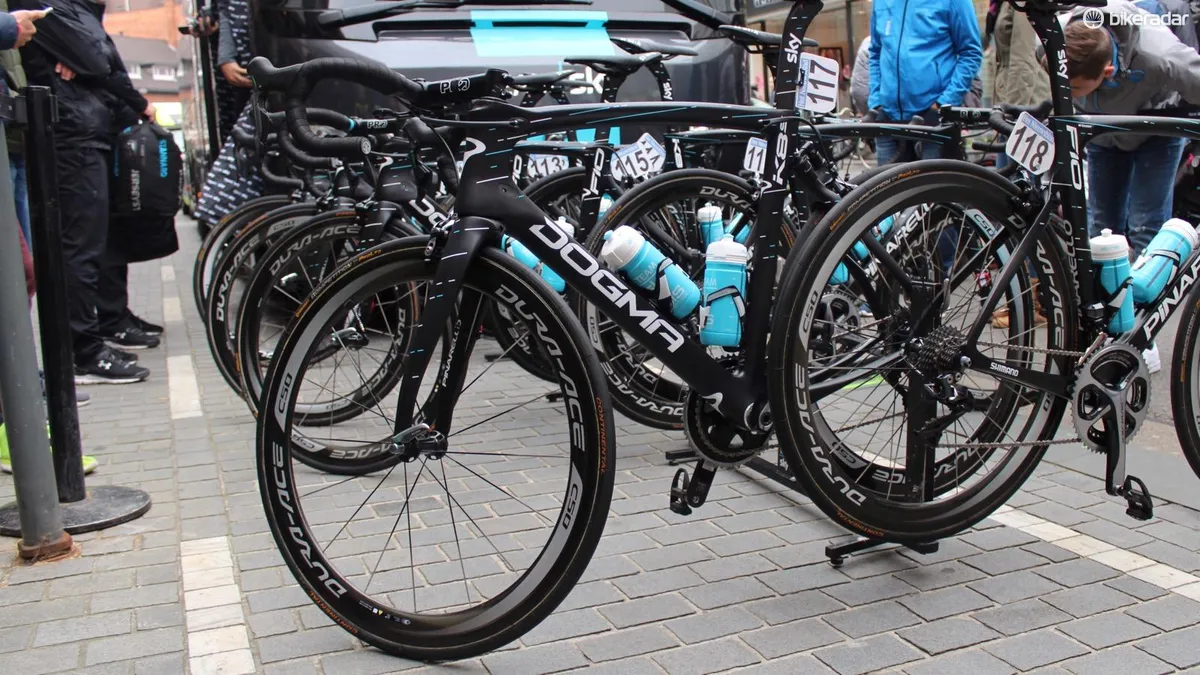This article was originally published April 5, and updated April 6 after Pinarello publicly announced the system.
With an eye towards Paris-Roubaix, Team Sky’s Ian Stannard raced a hydraulic rear suspension system with a HiRide automatic lockout control system affixed inside the seat tube of his Pinarello Dogma K8-S. Pinarello is calling the system eDSS 2.0, for 'electronic Dogma Suspension System'.
- Boonen races new front-suspension Specialized Roubaix at Flanders
- It’s about time suspension came to gravel bikes
The Dogma K8-S first launched at the 2015 Tour of Flanders, featuring interchangeable elastomers as the method of suspension control. Pinarello is calling this DSS 1.0. Various Team Sky riders have used the bike since, some opting for firmer elastomers, and then some racing the K8, which has the same frame shape but no suspension.
There are two unique things about Stannard’s K8-S. One, the hydraulic shock is a much more advanced system than a simple elastomer, albeit heavier. And two, the HiRide suspension adjustment system is novel for a road bike, similar in concept if not execution to some adjustable mountain bike suspension designs (like Lapierre's E.I.) that automatically account for changes in terrain.
Domenico Borgese, co-founder and technical leader of HiRide, said that his company has been working with Team Sky for a year and a half on the project.
In an announcement Thursday evening, Pinarello said the Dogma K8-S with this eDSS 2.0 will be available for sale "soon".
While the manual remote works, Borgese said Stannard preferred to just use the automatic mode, where a six-axis accelerometer/gyroscope senses changes in the road surface and adjusts the shock.
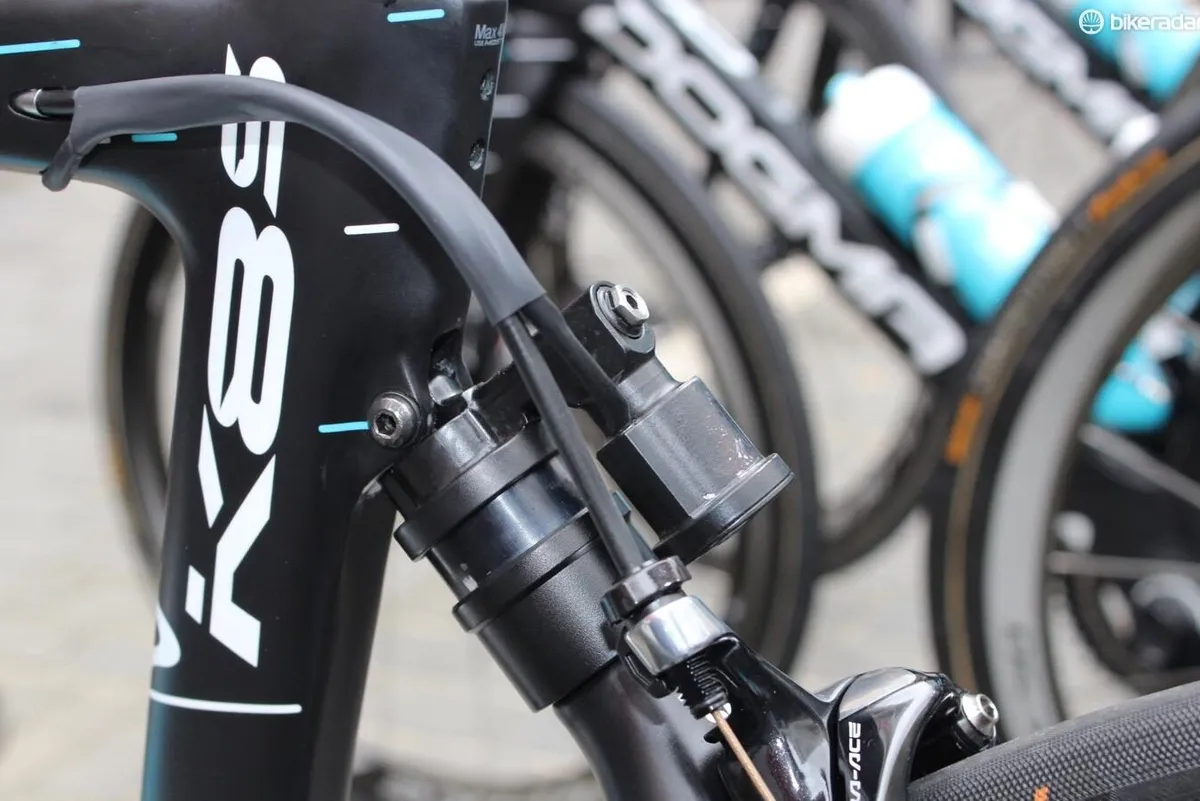
“In 0.4 seconds it goes from completely locked out, for normal road surfaces, to completely soft, as when he first hits the cobbles,” Borgese told BikeRadar.
The sensor unit is attached inside Stannard’s Dogma K8-S seat tube, affixed via the water bottle cage bolt threads.
Team Sky mechanic Ryan Bonser said Stannard and the team had only been trying the new automatic system for the last few days.
Other Sky riders at Scheldeprijs were on normal K8 bikes and Dogma F10s. As with other teams, Sky riders at Scheldeprijs were on a mix of normal race bikes for the day and Paris-Roubaix bikes (except for the tubulars) in preparation of Sunday.
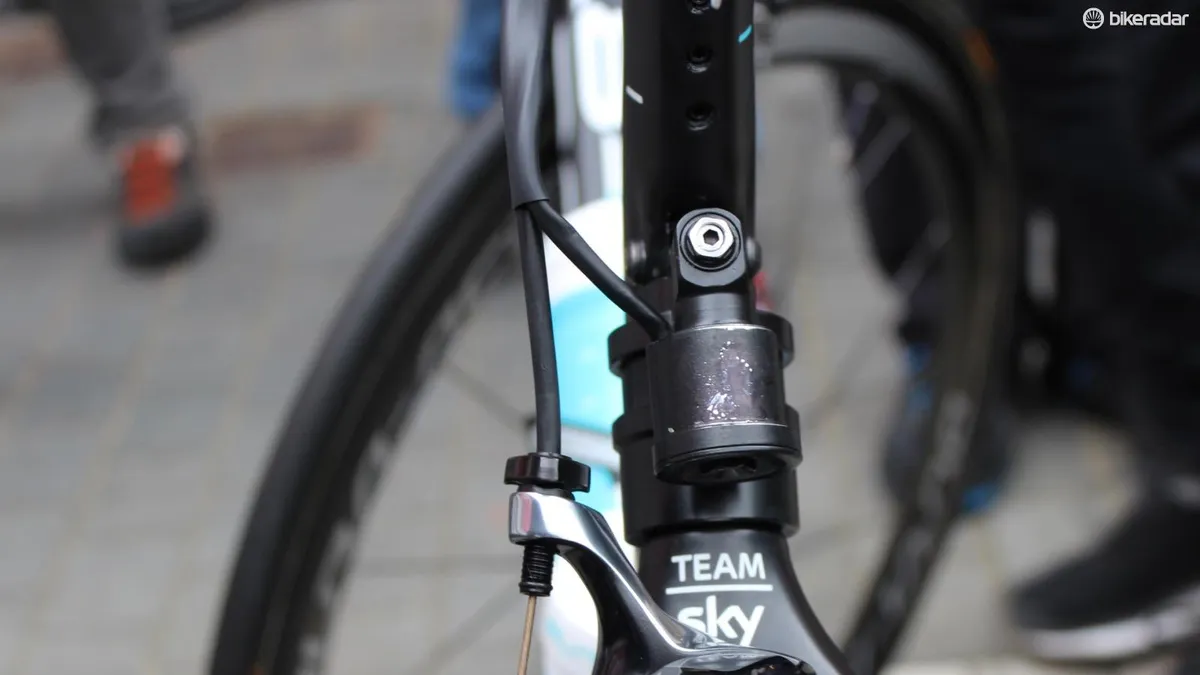
Pinarello recently announced plans for anti-lock brake system with BluBrake that uses sensors integrated into the frame to help modulate hard braking. That design — which Pinarello said could launch later this year — has a very similar looking bar-mounted remote to this HiRide system.
"I am very happy with this new and ambitious project that Pinarello Lab developed with the collaboration of HiRide," Fausto Pinarello said in a press release about the eDSS 2.0. "The introduction of an electro-hydraulic control system establishes an important step forward in the technological evolution of our bikes, improving performance and increasing safety.”
A few Specialized-sponsored riders will be racing the California company’s new front-suspension bike, the Roubaix, at Paris-Roubaix. That system uses a spring cartridge underneath the stem, suspending the handlebar.
The Future Shock can be tuned with a change in spring stiffness, but isn’t tunable on the fly, nor can it lock out. World champion Peter Sagan and multi-time Roubaix winner Tom Boonen both have rim-brake Roubaix bikes with very stiff springs in their Future Shocks.
